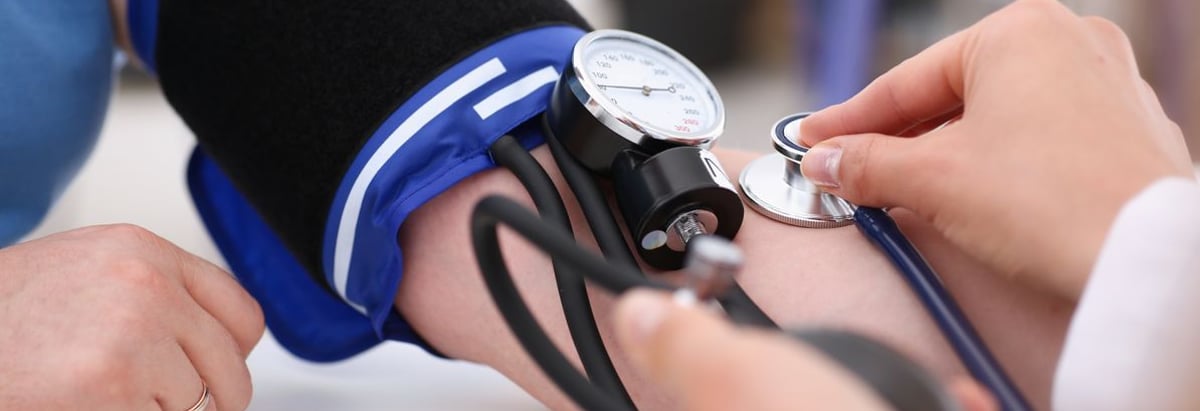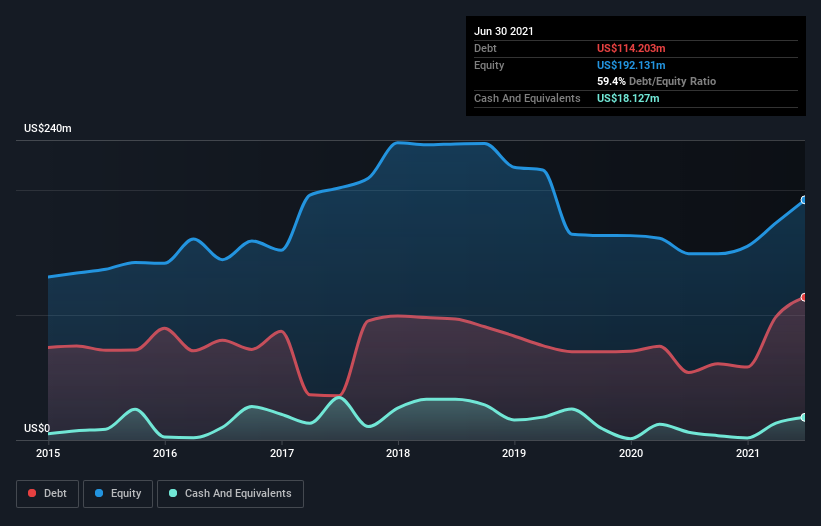- United States
- /
- Healthcare Services
- /
- NasdaqGS:CCRN
Cross Country Healthcare (NASDAQ:CCRN) Seems To Use Debt Quite Sensibly

Howard Marks put it nicely when he said that, rather than worrying about share price volatility, 'The possibility of permanent loss is the risk I worry about... and every practical investor I know worries about.' When we think about how risky a company is, we always like to look at its use of debt, since debt overload can lead to ruin. Importantly, Cross Country Healthcare, Inc. (NASDAQ:CCRN) does carry debt. But the real question is whether this debt is making the company risky.
Why Does Debt Bring Risk?
Generally speaking, debt only becomes a real problem when a company can't easily pay it off, either by raising capital or with its own cash flow. If things get really bad, the lenders can take control of the business. While that is not too common, we often do see indebted companies permanently diluting shareholders because lenders force them to raise capital at a distressed price. Of course, the upside of debt is that it often represents cheap capital, especially when it replaces dilution in a company with the ability to reinvest at high rates of return. The first thing to do when considering how much debt a business uses is to look at its cash and debt together.
Check out our latest analysis for Cross Country Healthcare
What Is Cross Country Healthcare's Net Debt?
As you can see below, at the end of June 2021, Cross Country Healthcare had US$114.2m of debt, up from US$54.0m a year ago. Click the image for more detail. On the flip side, it has US$18.1m in cash leading to net debt of about US$96.1m.

How Strong Is Cross Country Healthcare's Balance Sheet?
The latest balance sheet data shows that Cross Country Healthcare had liabilities of US$122.1m due within a year, and liabilities of US$179.4m falling due after that. Offsetting these obligations, it had cash of US$18.1m as well as receivables valued at US$261.2m due within 12 months. So its liabilities outweigh the sum of its cash and (near-term) receivables by US$22.2m.
Of course, Cross Country Healthcare has a market capitalization of US$757.8m, so these liabilities are probably manageable. However, we do think it is worth keeping an eye on its balance sheet strength, as it may change over time.
We use two main ratios to inform us about debt levels relative to earnings. The first is net debt divided by earnings before interest, tax, depreciation, and amortization (EBITDA), while the second is how many times its earnings before interest and tax (EBIT) covers its interest expense (or its interest cover, for short). Thus we consider debt relative to earnings both with and without depreciation and amortization expenses.
We'd say that Cross Country Healthcare's moderate net debt to EBITDA ratio ( being 1.6), indicates prudence when it comes to debt. And its strong interest cover of 16.7 times, makes us even more comfortable. Even more impressive was the fact that Cross Country Healthcare grew its EBIT by 273% over twelve months. If maintained that growth will make the debt even more manageable in the years ahead. The balance sheet is clearly the area to focus on when you are analysing debt. But ultimately the future profitability of the business will decide if Cross Country Healthcare can strengthen its balance sheet over time. So if you want to see what the professionals think, you might find this free report on analyst profit forecasts to be interesting.
But our final consideration is also important, because a company cannot pay debt with paper profits; it needs cold hard cash. So it's worth checking how much of that EBIT is backed by free cash flow. In the last three years, Cross Country Healthcare created free cash flow amounting to 18% of its EBIT, an uninspiring performance. That limp level of cash conversion undermines its ability to manage and pay down debt.
Our View
Cross Country Healthcare's interest cover suggests it can handle its debt as easily as Cristiano Ronaldo could score a goal against an under 14's goalkeeper. But, on a more sombre note, we are a little concerned by its conversion of EBIT to free cash flow. It's also worth noting that Cross Country Healthcare is in the Healthcare industry, which is often considered to be quite defensive. Looking at the bigger picture, we think Cross Country Healthcare's use of debt seems quite reasonable and we're not concerned about it. After all, sensible leverage can boost returns on equity. There's no doubt that we learn most about debt from the balance sheet. However, not all investment risk resides within the balance sheet - far from it. For example Cross Country Healthcare has 5 warning signs (and 3 which are a bit concerning) we think you should know about.
If, after all that, you're more interested in a fast growing company with a rock-solid balance sheet, then check out our list of net cash growth stocks without delay.
New: AI Stock Screener & Alerts
Our new AI Stock Screener scans the market every day to uncover opportunities.
• Dividend Powerhouses (3%+ Yield)
• Undervalued Small Caps with Insider Buying
• High growth Tech and AI Companies
Or build your own from over 50 metrics.
This article by Simply Wall St is general in nature. We provide commentary based on historical data and analyst forecasts only using an unbiased methodology and our articles are not intended to be financial advice. It does not constitute a recommendation to buy or sell any stock, and does not take account of your objectives, or your financial situation. We aim to bring you long-term focused analysis driven by fundamental data. Note that our analysis may not factor in the latest price-sensitive company announcements or qualitative material. Simply Wall St has no position in any stocks mentioned.
Have feedback on this article? Concerned about the content? Get in touch with us directly. Alternatively, email editorial-team (at) simplywallst.com.
About NasdaqGS:CCRN
Cross Country Healthcare
Provides talent management services for healthcare clients in the United States.
Flawless balance sheet and fair value.
Similar Companies
Market Insights
Community Narratives



